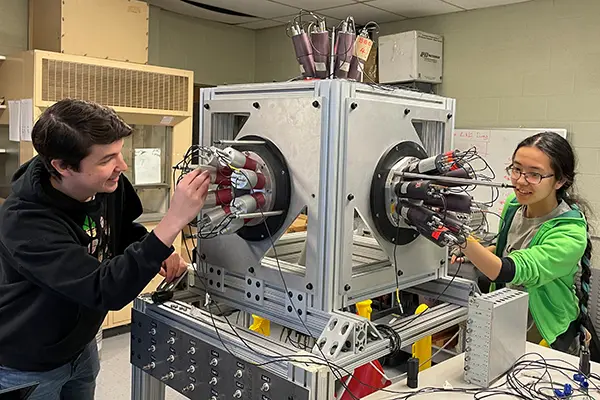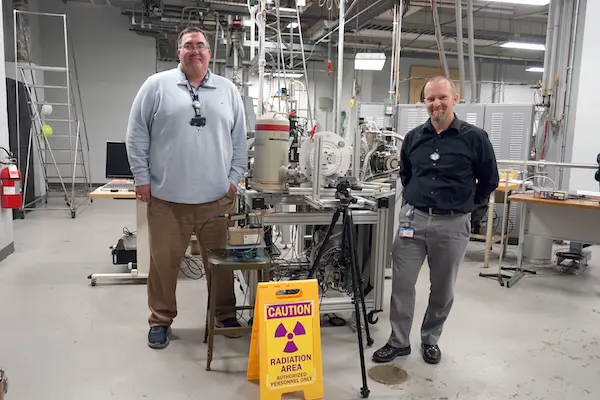 Image by Brooke Coupal
Image by Brooke Coupal
Studio art senior Kara Cormier presents her winning sculpture proposal.
At the bottom of a pool inside the Radiation Lab, a blue light glows around a 1-megawatt nuclear reactor.
“It looks super mysterious,” says Kara Cormier, a studio art senior from Billerica, Massachusetts.
The glow is the result of Cherenkov radiation, which happens when electrically charged particles travel through water faster than the speed of light (which slows to three-quarters of its full speed when in water). The phenomenon served as inspiration for Cormier, who recently won a radiation-themed sculpture contest held in partnership with the Radiation Safety Office, Radiological Sciences in the Department of Physics and Applied Physics and Art & Design Assoc. Prof. Yuko Oda’s Sculpture III class.
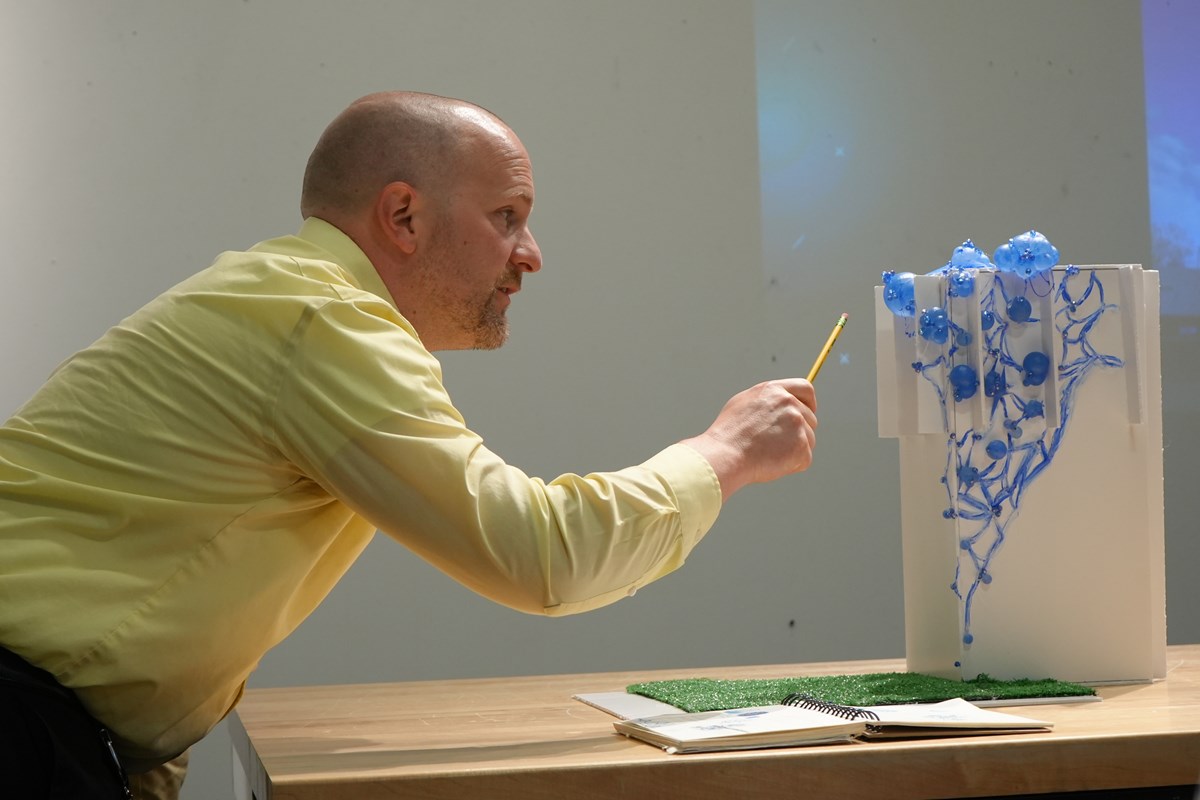 Image by Brooke Coupal
Image by Brooke Coupal
Radiation Safety Director Steven Snay examines studio art senior Sam Poole's sculpture model.
“Pinanski Hall has this awesome hermit crab on the backside of the building (facing VFW Highway), but then on the other side where people walk by, it’s just the plain building,” Snay says. “I wondered, ‘How do we make the building more approachable and inviting?’”
Wanting to get students involved with his idea, Snay reached out to the former chair of the Department of Art & Design, Ellen Wetmore, who connected him with Oda.
“This contest prepares students for future careers, where they will be applying to projects, trying to get grants and having to create artwork that communicates their ideas,” says Oda, who incorporated the contest into the semester’s coursework. “It was exciting for them to learn what public art is and how to think about ideas that went beyond themselves and served the community.”
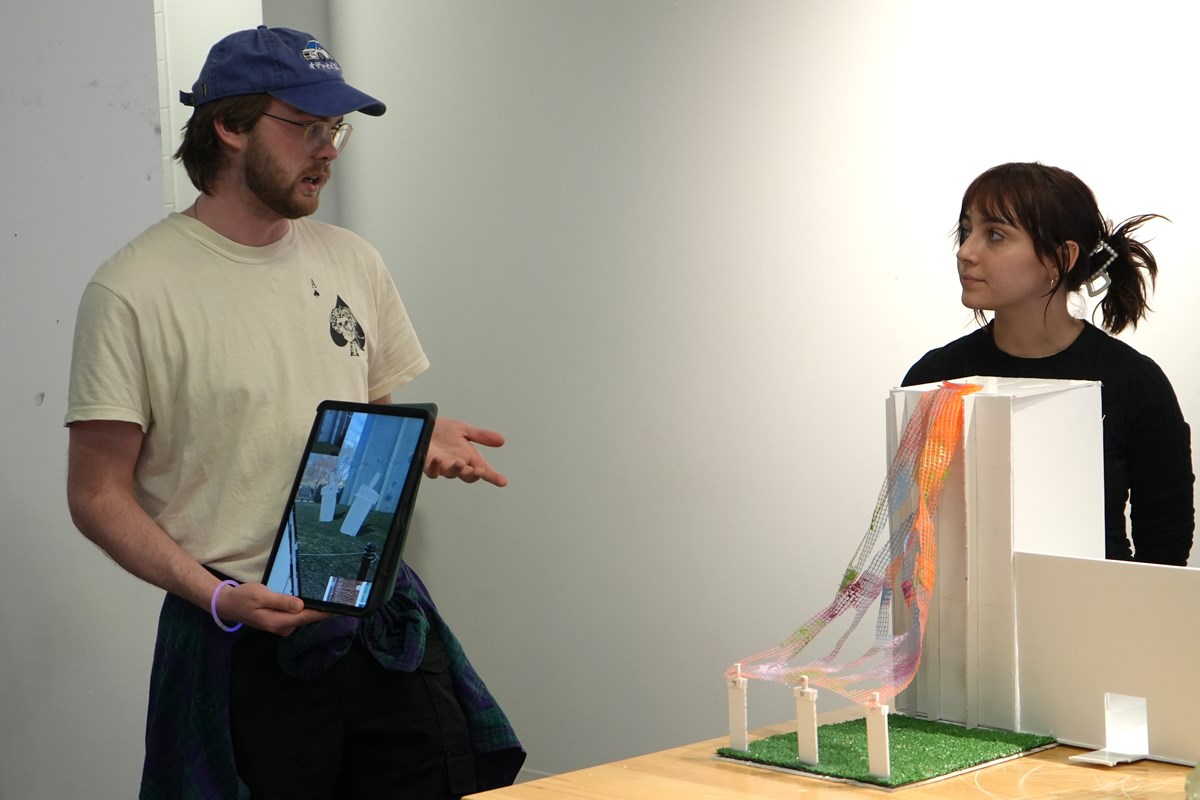 Image by Brooke Coupal
Image by Brooke Coupal
From left, junior Kegan Smith and senior Nicole Ekstrom describe their proposed sculpture.
Oda’s class visited Pinanski Hall and the Radiation Lab in mid-March to draw inspiration for their sculpture proposals. For studio art junior Kegan Smith, seeing the lab sparked his creativity.
“There were a lot of elements that the group had taken from that tour,” the Mansfield, Massachusetts, native says. “I wandered with a sketchbook, and every time I saw something interesting, I would try to draw it as quickly as I could.”
As Smith looked around, the spare control blades for the reactor captured his attention. Working with fellow studio art majors Nicole Ekstrom and Cassandra Donnelly, the students included control blades in their scaled-down sculpture model. They proposed that three control blades (constructed of concrete or stainless steel) stick out of the grass in front of Pinanski Hall with a large sustainable and weather-proof net connecting the blades to the building. The net would be multi-colored to represent the colors of the first atomic rock and thermal energy, which the students read about on posters during the tour.
“We wanted to show visually that radiation can have this beautiful essence,” says Ekstrom, who is from Wilmington, Massachusetts.
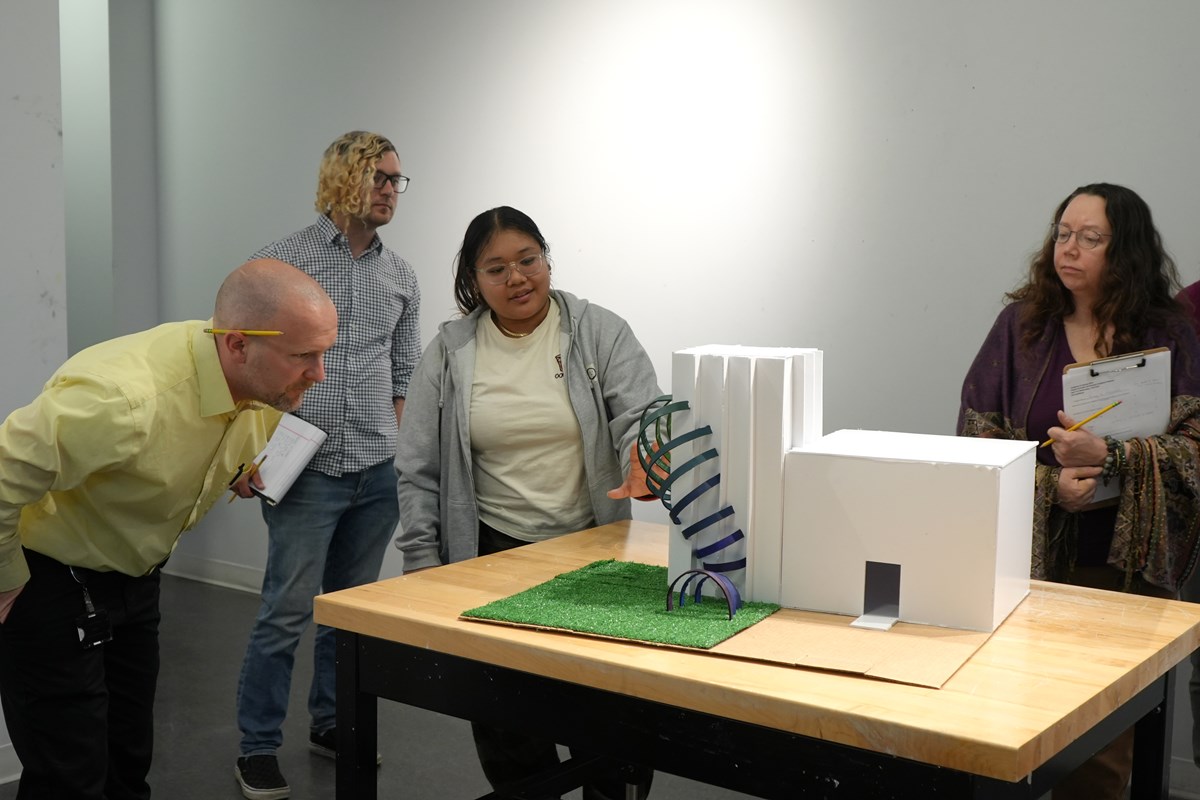 Image by Brooke Coupal
Image by Brooke Coupal
Studio art junior Monique An, center, shows off her sculpture model to judges, from left, Steven Snay, Stephen Cadigan and Deborah Santoro, right.
“We had negative connotations in mind when thinking about radioactivity, so to be able to see it in person and see the type of work they’re doing, it’s really inspiring,” the Dracut, Massachusetts, resident says. “To be able to have the opportunity to create a place where art and science can intersect was also inspiring. I don’t think we would have been able to accomplish that without seeing the space itself.”
Sam Poole, a studio art senior from Hudson, New Hampshire, drew inspiration from the cancer-related research conducted within Pinanski Hall. She proposed a sculpture that features blue cancer cells affixed to the building. The cells diminish in size as they go down the building, representing how radiation can help treat cancer.
“This is a great experience and great for my résumé,” says Poole, who adds that working on a public art piece gave her knowledge about staying within a budget, keeping with a theme and creating a sculpture that resonates with the public.
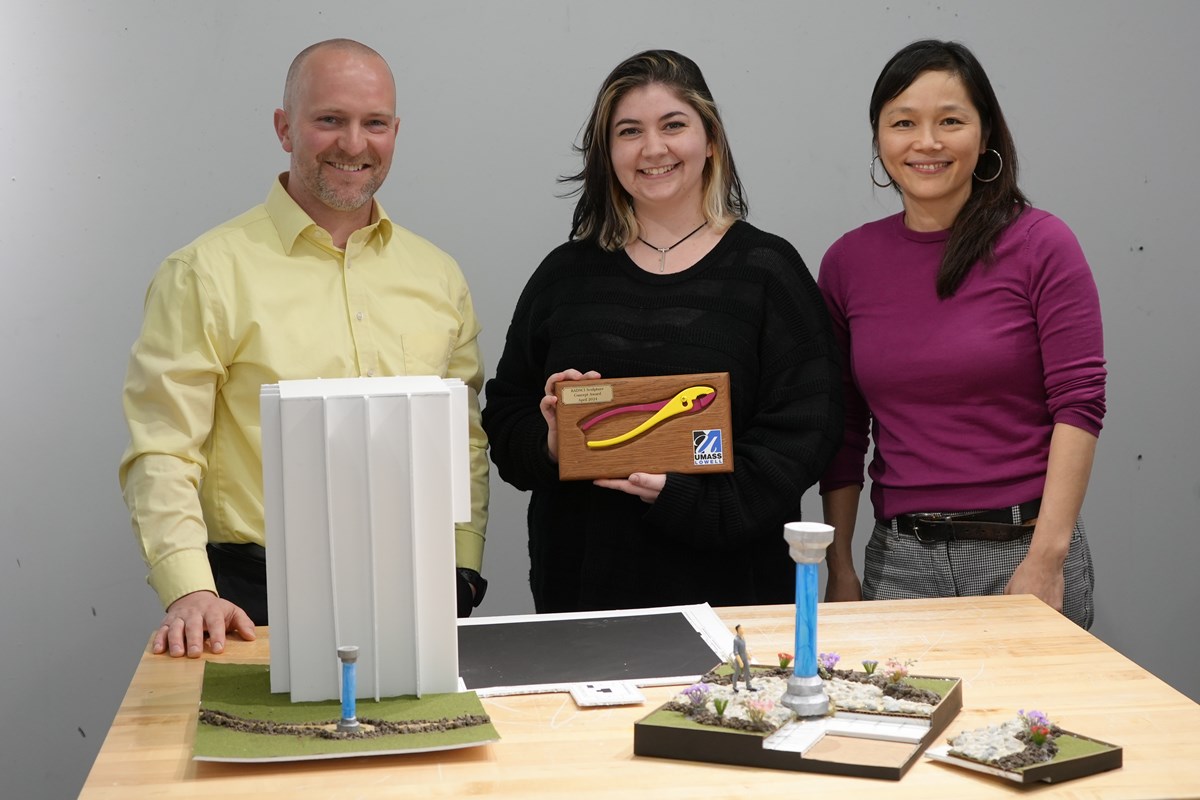 Image by Brooke Coupal
Image by Brooke Coupal
Kara Cormier, center, is awarded a plaque from Steven Snay, left, and Yuko Oda, right.
Cormier’s winning piece was voted on by a panel of judges including Snay, Campus Planner Stephen Cadigan and Gallery Coordinator Deborah Santoro following a sculpture proposal presentation in Dugan Hall. She envisions students from UMass Lowell and local vocational schools helping to construct the sculpture.
Cormier, in accompaniment with Snay and Oda, later presented her winning sculpture proposal to the Kennedy College of Sciences dean’s office, which is helping her to explore the possibilities of erecting the sculpture on campus.
“They offered wonderful feedback on the sculpture, and we talked about plans for the grounds on North Campus,” says Cormier, who is now coming up with alternative sculpture designs based on the feedback. She plans to present those new designs to the dean’s office within the next two months.
“It’s been an incredible learning experience,” she adds.

